From M.F. Husain in Venice and Rosana Paulino in Buenos Aires to Berlin Gallery Weekend, our editors on what they’re looking forward to this month
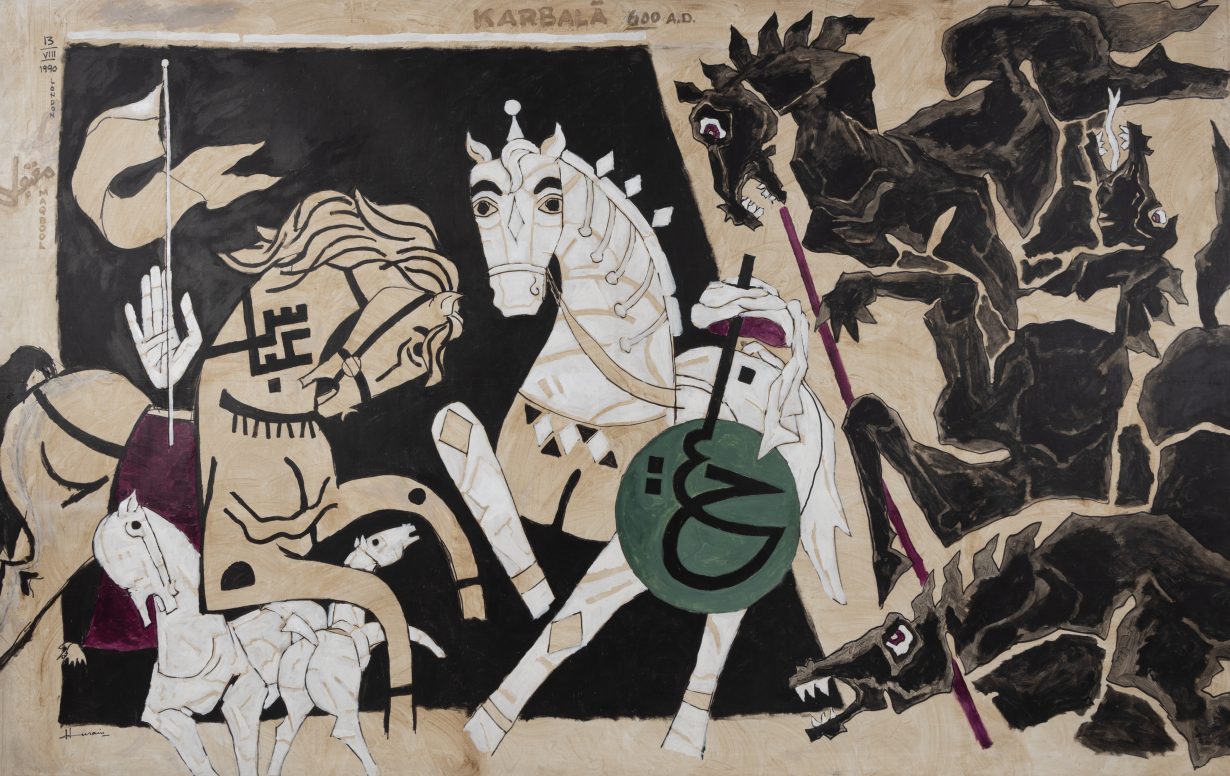
M.F. Husain: The Rooted Nomad
Magazzini del Sale, Venice, 18 April–24 November
Running in parallel to this year’s Venice Biennale (but unlike that exhibition, this one’s free to enter) is a survey of the life and work 18 of Maqbool Fida Husain (better known by his initials), one of the pioneers of modernism in Indian painting. Supported by India’s leading collector of contemporary art Kiran Nadar (whose holdings number over 10,000 artworks), The Rooted Nomad is an ‘immersive’ exhibition, which we’re not sure is an invitation or a warning, but is something Husain might well have embraced, having worked on his own immersive-type experiences (and with the glassmakers of Venice) at the time of his death in 2011. By then, the artist was living in Doha and London, effectively exiled from his homeland following a series of religious controversies and allegations of obscenity in relation to his work and a rising tide of Hindutva prejudice. The perfect accompaniment, then, to the biennale’s main theme: Foreigners Everywhere. Nirmala Devi

Anna Park: Look, look
Art Gallery of Western Australia, Perth, 20 April–8 September
Anna Park has always been preoccupied with how the American media has manipulated both actual and perceived reality. When the artist moved to the US as a child, she thought her life would be like the Disney Channel shows she had watched from her home in South Korea. Perhaps unsurprisingly, she was disappointed to find her life didn’t match. So began a fascination with and interrogation of media-cultivated versus lived reality that manifests within Park’s practice as largescale black-and-white drawings. Deriving inspiration from 1950s American advertisements, comic books and Pop culture, works like Now You See Me (2021) or Hero Mentality (2021) are frenetic and sardonic examples characteristic of Park’s visual lexicon. In the former, a blonde woman beams like the Cheshire Cat in the middle of what appears to be a press conference. A blur of microphones and flowers swarm around her, emphasising the irony of the drawing’s title, in which we actually have no sense of what the central protagonist is like. Here, Park spotlights fame, spectacle and expectation with her distinct satirical style. In the show at AGWA, Park will be presenting a new series of works in which such interrogations of the media are sure to be rife. Marv Recinto
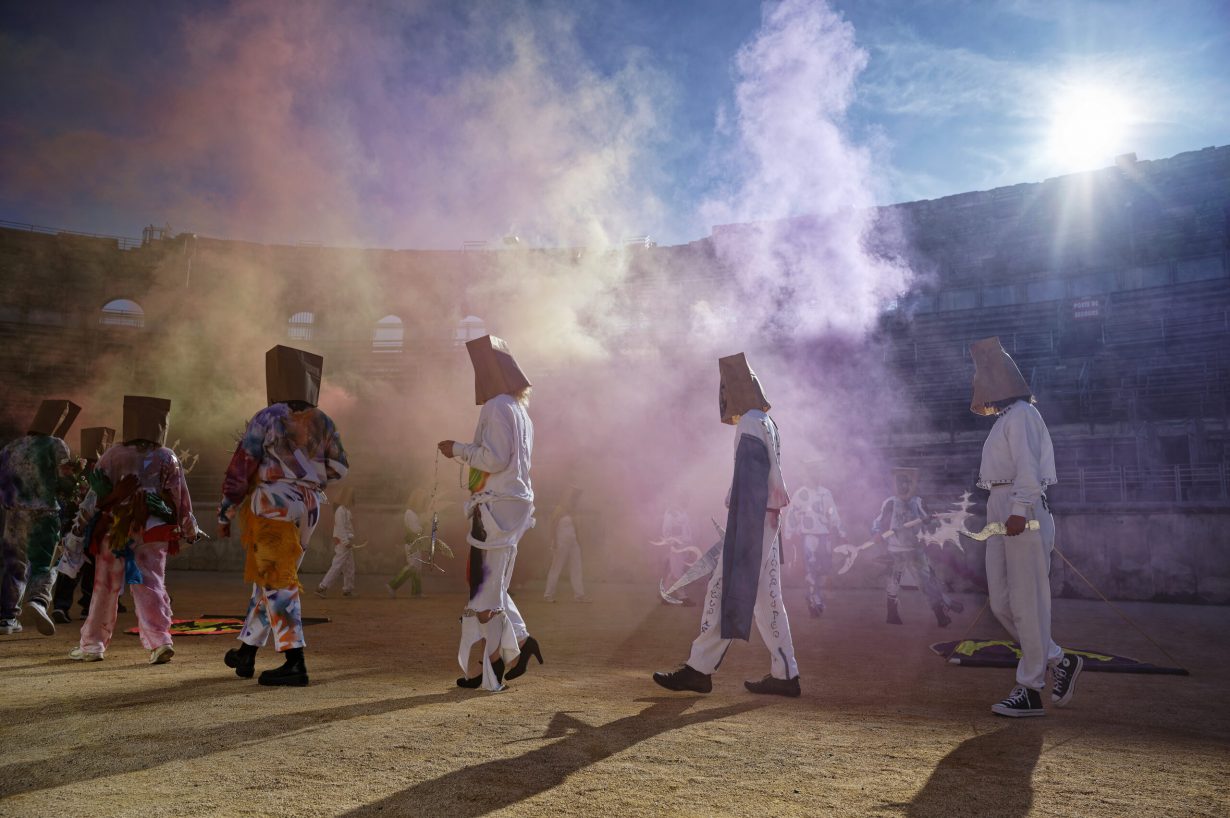
1st Contemporaine de Nîmes
Various venues, 5 April–23 June
If you needed another reason to visit Nîmes – other than, say, indulging in unreasonable amounts of brandade de morue – then the city’s first contemporary art triennial might do the trick. Under the helm of Anna Labouze & Keimis Henni, who have been attending to the emerging art scene as directors of the nonprofit hub Artagon and Les Magasins Généraux in Paris, the menu for this first edition is placed under the sign of intergenerational dialogue and transmission, and how fostering these exchanges might help shape new ways of living together. As its the pièce de resistance are a dozen original projects resulting from the pairing of artists at different stages of their careers – with a focus on the country’s art scene – and involving the participation of city residents. Some such pairings, like the interactive sculptures of Caroline Mesquita and Laure Prouvost, are full-blown artistic collaborations; others take the form of a mentorship (like Zineb Sedira with artist and photographer Alassan Diawara) or a meet-your-hero type of show (Aïda Bruyère showing alongside Judy Chicago). The whole will be served with a side of associated exhibitions across town, punctuated a series of performative events, bracketed by an opening ball under the chaperonage of Bruyère and DJ Barbara Butch in the city’s Roman arena, and a giant artistic school fair of sorts, led by Mohamed Bourouissa, to close the festivities. Louise Darblay

Rosana Paulino: Amefricana
Malba (Museu de Arte Latinoamericano de Buenos Aires), through 10 June
Paulino was once asked which artists influenced her: she told the interviewer that while she was interested in the Baroque, and begins in the library long before she picks up a paintbrush or starts a sculpture, collage or textile work, she could not identify a particular historical figure as her subject was Afrobrasilian culture, specifically female culture, which the history book rarely preserved, let alone celebrated any individual. Her work is steeped in questions of colonialism and racism – her first show outside Brazil spins four themes – ‘Atlantic Memories’, ‘The Colonial Structures of Science’, ‘The Narratives of Brazilian Art’ and ‘Weavings of Subjectivity’ – but is also full of strength and joy in its Afro-descendant American mythological and cosmological references. Oliver Basciano
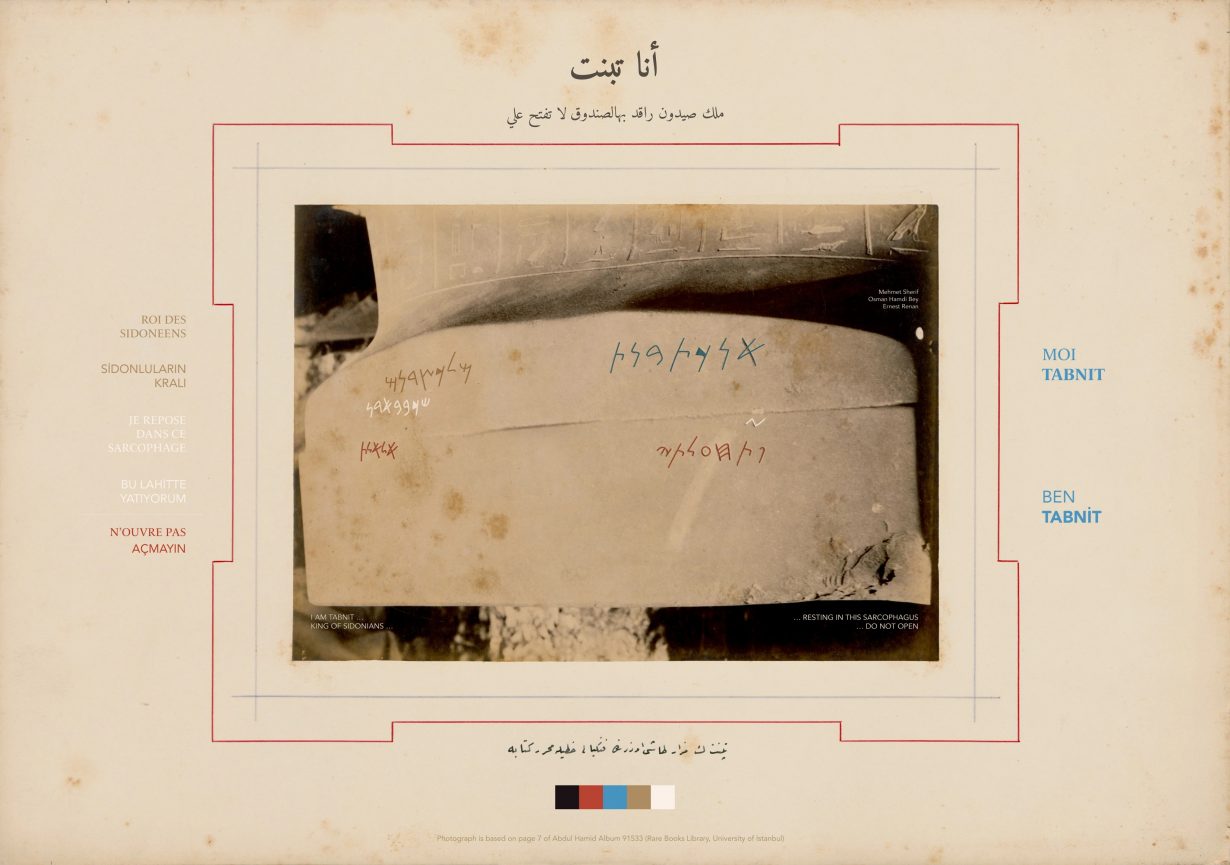
Akram Zaatari: Father and Son
Thomas Dane, Naples, 23 April–13 July
You could call Akram Zaatari something of an archaeologist. One whose practice lies in the unearthing of Lebanon’s history – but rather than presenting his findings as objective documentation, Zaatari creates works that are symbolically emotive. He documents histories by tracking objects and excavates narratives lost or obscured over time, specifically those vanished as a result of war and displacement. The artist’s aim is to piece together and restore severed connections between the people, their history and their culture. In Father and Son, Zaatari will focus on restitution, employing text, historical documents and photographs to ‘recreate objects or ties that once existed’. Spanning two decades of his career, the exhibition will present a range works, including Zaatari’s recent and titular series, which reunites two Phoenician sarcophagi via 3D scans, a film and photographs. Also on show are the photographic installation Archeology (2017) and the 2002 video Ain el Mir, which follows Zaatari as he searches for a Lebanese resistance fighter’s decade-long buried letter. His most recent work in the exhibition, a brass relief titled Ibrahim and the Cat, For Inji Efflatoun (2024) is made in collaboration with artisans in Naples, and is described as giving ‘new form to a forgotten photograph taken by the father of Egyptian artist Inji Efflatoun for the purpose of making a painting that was never produced’. Recreating vanished or unrealised objects, Father and Son will reflect on Zaatari’s long-held preoccupations with which parts of history are recorded, which parts are forgotten and how those untold stories might be reconnected with the present. Fi Churchman
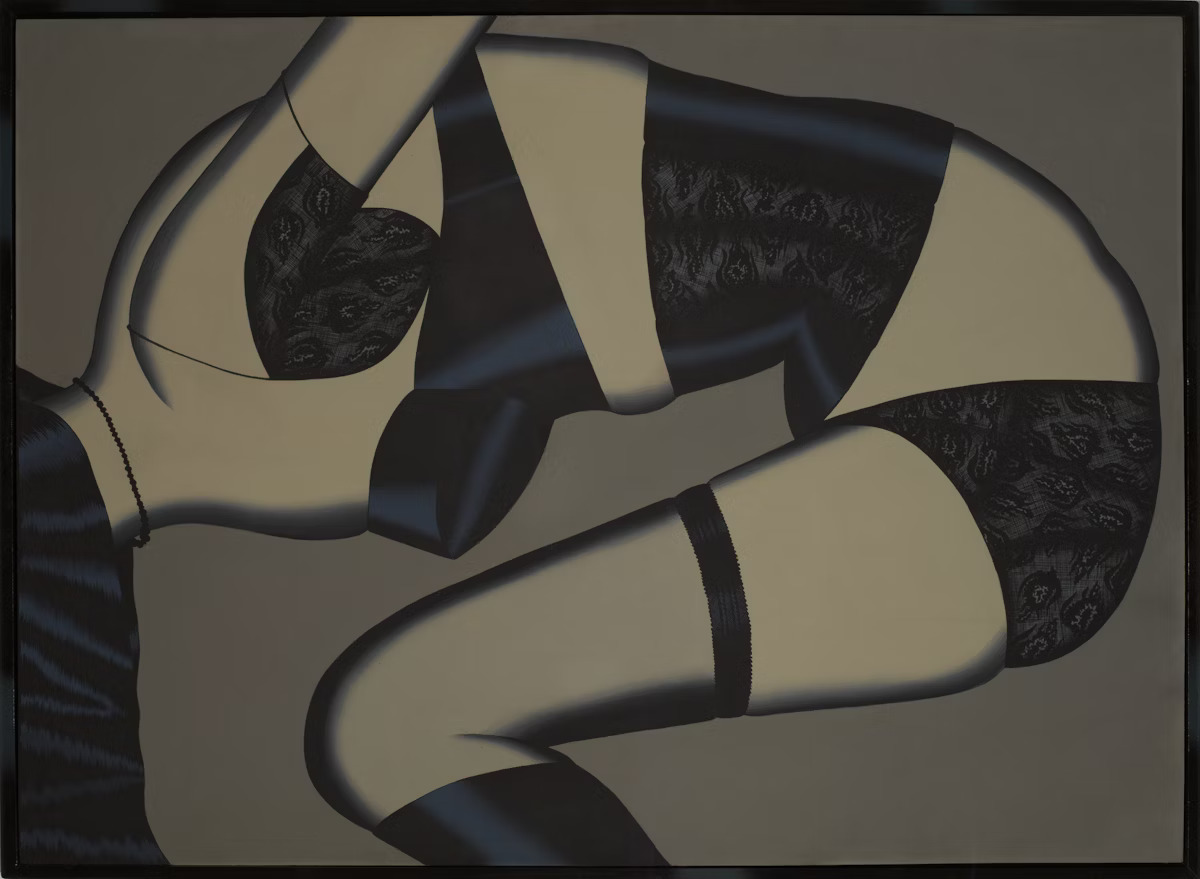
Christina Ramberg: A Retrospective
The Art Institute, Chicago, 20 April–11 August
If abstract painting was the dominant trend in art in New York during the 1960s and early 70s, elsewhere in America were artists who celebrated both the painted image and pop culture in ways anathema to New York’s critical consensus. The Chicago Imagists, a loose grouping of artists associated with the School of the Art Institute of Chicago, were inspired by the ‘low’ forms of image-making; folk art, comics and advertising as much as Surrealism – everything ‘high’ modernists critics loathed. Well-known and long-lived members included Leon Golub and Nancy Spero; less well-known, and now being rightly rediscovered is Christina Ramberg. Her cool, stylised yet strangely humorous paintings often pictured the faceless female body, constrained and defined by clothing – underwear, corsets, dresses – to create an iconography rich in feminist allusions to the objectifications of a sexist culture. In this first major showing of her work in America in over three decades, Ramberg’s razor-sharp line, gloomy palette, harsh, graphic contrasts and her denial of expressive gesture, show an artist unafraid to appropriate and inhabit the erotics of fetishism in ways which, even today, remain uncanny and troubling reflections on female experience, power and subjection. J.J. Charlesworth
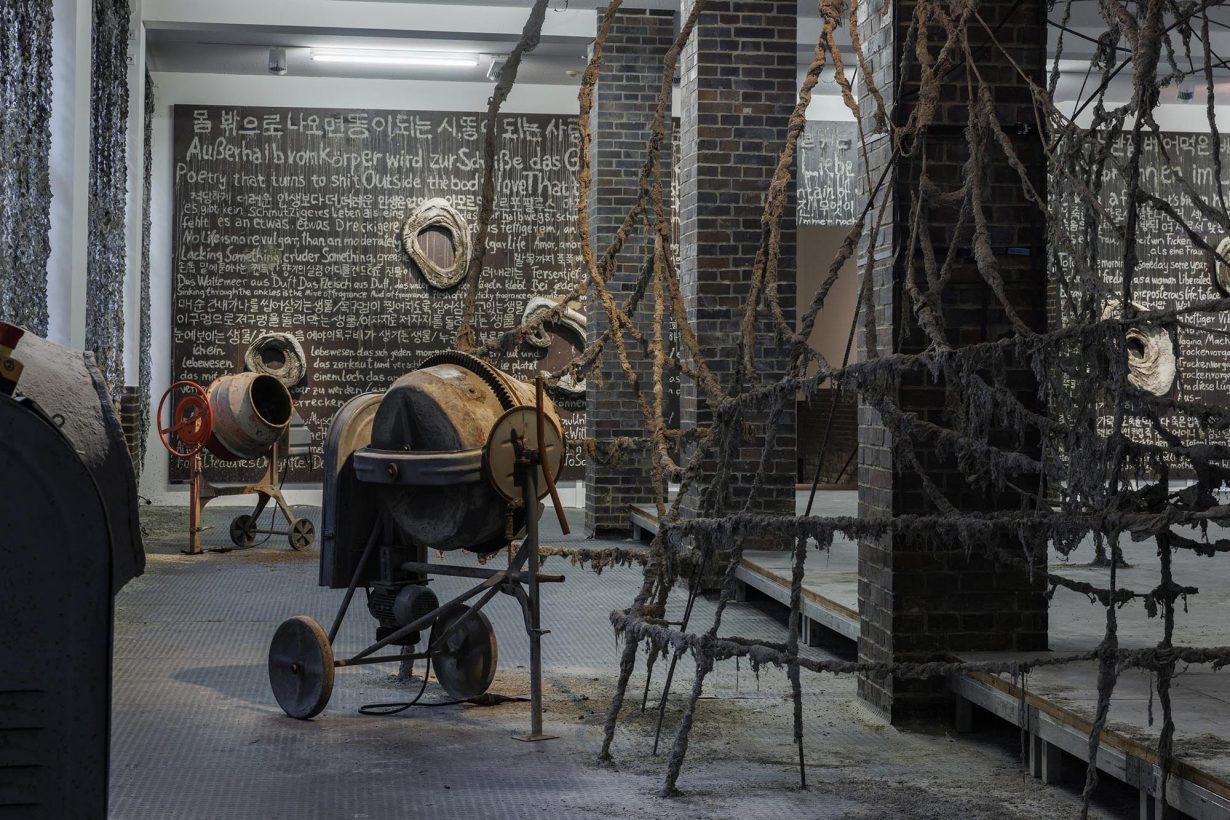
Berlin Gallery Weekend
Various venues, 26–28 April
Berlin has long been known as a city for artists, offering plentiful studio space and comparatively low rent. The creep of gentrification has increasingly threatened these conditions, as has the recent political fallout, as some artists and institutions have found themselves facing postponed or cancelled exhibitions and a loss of funding after calling for a ceasefire in Gaza. Yet the city remains animated by a youthful creative ecosystem, energy and defiant debate. The annual Berlin Gallery Weekend, staged each spring for two decades since it was founded, sees gallerists come together to showcase their artistic community. This year more than 60 galleries open their doors, offering an alternative map to explore the city’s geography. Highlights include Mire Lee at Spruth Magers (part of a group show focused on five Asian artists), hot off her New Museum solo show last year and recently announced as the next artist to take over Tate Modern’s annual Turbine Hall commission this October. British artist duo Hannah Quinlan and Rosie Hastings, whose work explores the history and politics of LGBTQ+ culture in the west, will open an extensive new show at Galerie Isabella Bortolozzi. Across town, Oslo-based Frida Orupabo presents new collages and sculptures at Galerie Nordenhake; drawing on her former training as a sociologist, she questions the many ways in which we read and misread archival and found images. Louise Benson

Bienal de Coimbra
Various venues, 6 April – 30 June
Half a century ago the Carnation Revolution ended Portugal’s right-wing military dictatorship and brought African victory in the bitter wars for independence in Angola, Guinea-Bissau and Mozambique. That same year, across the country’s European border in Spain, Luís Buñuel was finishing The Phantom of Liberty (1974), his surrealist cinematic masterpiece. The curators of this year’s Bienal de Coimbra have taken the confluence of these two events to meditate on the question of freedom. Despite the joy of 1974, they conclude it to be a ‘spectral presence… more of a promise than something real”, considering everything that has gone on since. If in politics we will never be free, in art, as Buñuel taught us, maybe there’s still radical promise: testing that thesis is work spread across various venues in the Portuguese city (including the botanic gardens and its mediaeval monastery) – by the likes of Fluxus pioneers Robert Filliou, of France, and Túlia Saldanha, of Portugal; and contemporary artists including Neo-expressionist-influenced Mozambican painter Ilídio Candja Candja and Angolan satirical muralist Yonamine. Oliver Basciano
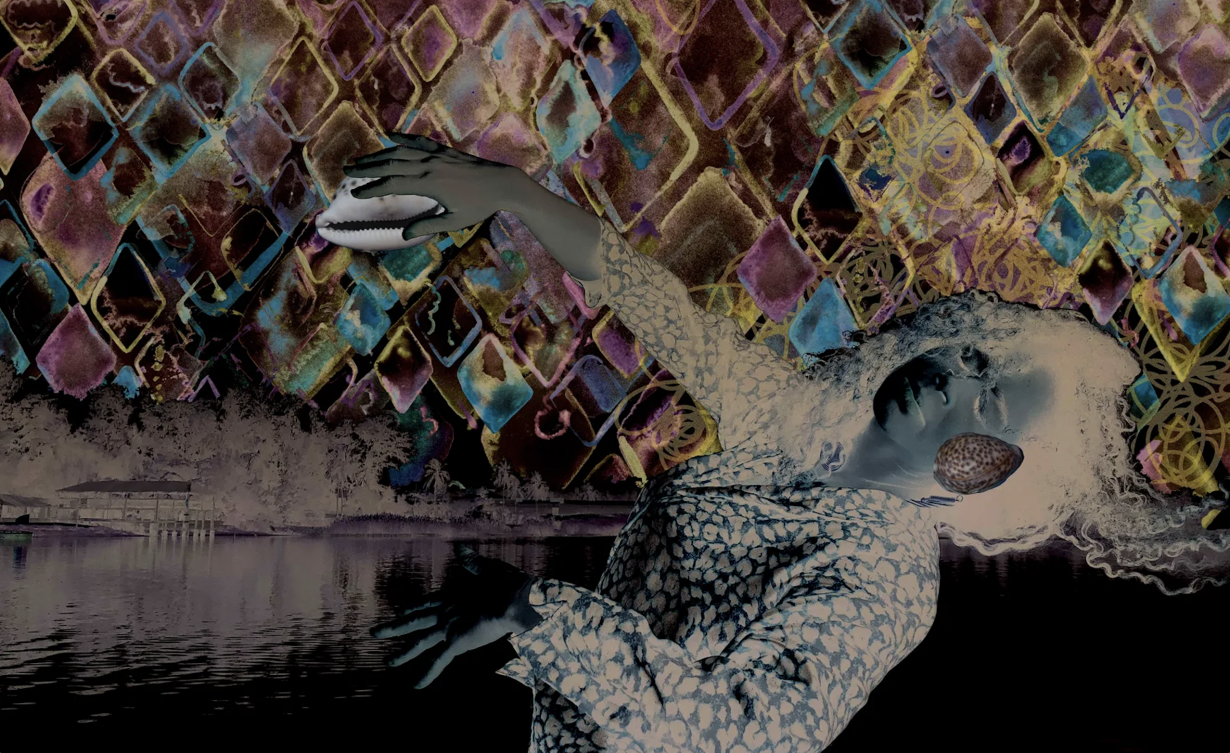
Part 1: Figures on Earth & Beyond
Gallery 1957, London and Accra, through 25 May (and late 2024)
A constellation is a network of connections; a pattern of stars amid the dark. A new exhibition at Gallery 1957’s London site takes this model of interconnection and exchange as its starting point — not least in the decision to stage it in two parts, with the latter half taking place later this year at the gallery’s Accra location. There is a sense of wonderment in looking up at the night sky, as well as a heightened awareness of just how small a part we humans play in the endless dance of the cosmos. In short, there’s nothing quite like browsing on Google Earth to make you feel small. The 16 artists in this show come together to consider how interspecies dynamics and vast ecological change could ultimately transcend the influence of human activity on earth. They pay close attention to our sense of place and awareness of nature, as in Barbadian-Scottish artist Alberta Whittle’s surreal collage of a dreamy water landscape and self-portrait, in which the artist closes her eyes and attempts to listen to the rippling ecosystem just beneath the surface. While in the work of Lisa C. Soto, an artist with Puerto Rican and Jamaican heritage based in Ghana, her own fragmented experience of belonging emerges in delicate wire sculptures that incorporate shells, found objects and dried peas, in an abstract cartography of the roots we each grow from and leave behind. Louise Benson
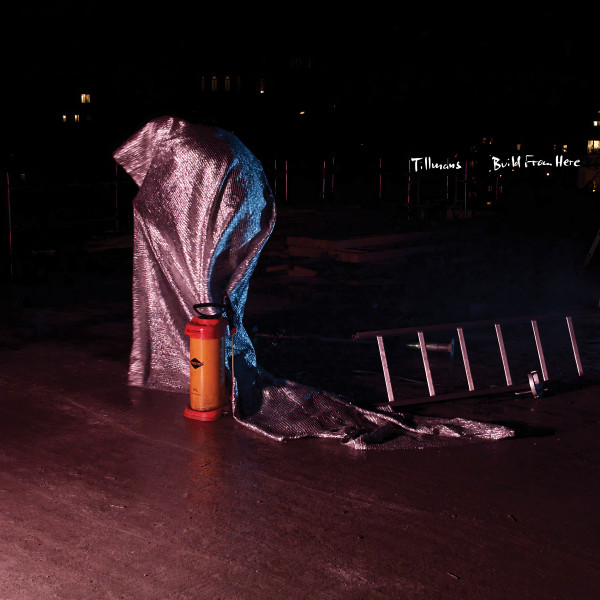
Wolfgang Tillmans: Build from Here
Fragile, 26 April
It wouldn’t be unfair to say that elder statesman of the artworld Wolfgang Tillmans’s greatest contribution to popular music was a photograph: the face of Frank Ocean on the cover of Blonde (2016), his green hair illuminated by sunlight and face masked by his hand beaded with water droplets. Tillmans has often declared his abilities as a musician and DJ, interspersing his career in contemporary art with albums and mixes that rather nostalgically reference 1980s synthpop and new wave. If his career in contemporary art has shifted from hedonistic experimentalism to a more steady maturity – the subject of recent surveys and chair of London’s ICA – then his music reflects a similar pensiveness, a taste for reflection over progression. His new album, Build from Here has been preceded by singles ‘Regratitude’ (surely someone’s tumblr username is being ripped off) and ‘Grüne Linien’. The latter has all the twang and shimmer of New Order, the trundling drums and sprechgesang of Neu!; the former throbs with sinewy bass and euphoric synth riffs, his matter-of-fact lyrics – ‘That was a splash in my face, helpless, hopeful’ – delivered like the voice of an autotuned Edeka self-checkout till. I’ve always thought the ICA shop could do with some background music. Alexander Leissle